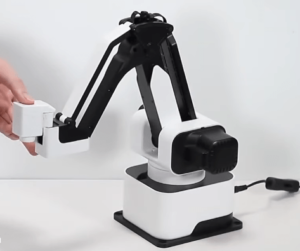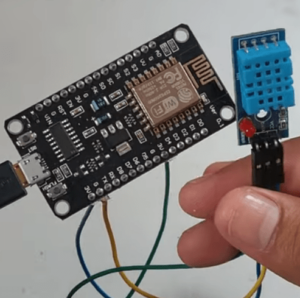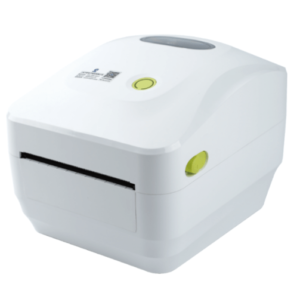Email: anwenqq2690502116@gmail.com
Technology Introduction of Multidimensional Sensor Fusion and Data Sharing System for F35 Fighter
As pointed out in the video, fifth-generation fighter jets are not only defined by stealth, but also by sensor fusion and data sharing. Stealth, in turn, is provided by reduced radar detection, infrared signature masking, visual masking, and radio signature reduction.
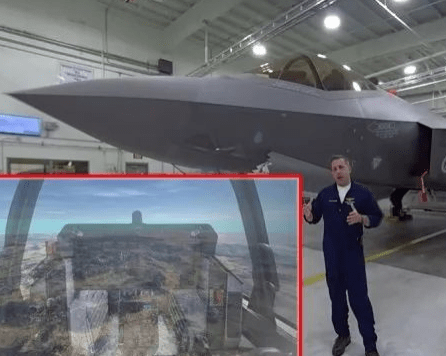
Technology Introduction of Multidimensional Sensor Fusion and Data Sharing System for F35 Fighter
The first system the test pilots demonstrated was the EOTS, the most important sensor along with the AN/APG-81 AESA (Active Electronically Scanned Array) radar. EOTS stands for Electro-Optical Targeting System and consists of two subsystems, TFLIR (Targeting Forward Looking Infrared) and DAS (Distributed Aperture System). Interestingly, on the official Lockheed Martin, Northrop Grumman and F-35 websites, EOTS and DAS are described as separate systems, and TFLIR is one of the cameras used by EOTS (the others are CCD- TV cameras and lasers). This also seems to be confirmed by systems with two separate official designations AAQ-40 EOTS and AAQ-37 DAS. These systems, along with the APG-81 radar, enable pilots to locate, track and target enemy aircraft, ground vehicles or any other target, day and night and in all weather conditions.
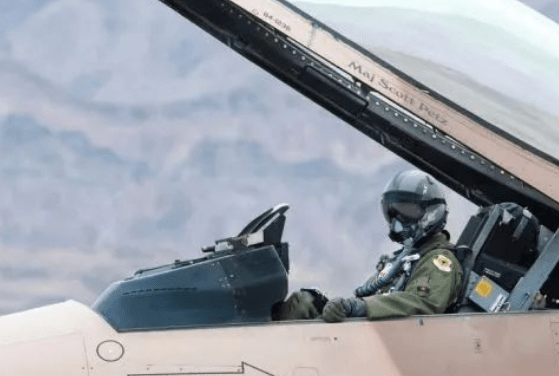
Aircraft test pilot helmet sensor
EOTS, or TFLIR (Targeting Forward Looking Infrared) as mentioned in the video, is the equivalent of traditional targeting pods carried on the outside of traditional fighter jets. In this case, the system was developed by Lockheed Martin from the Sniper XR (Extended Range) targeting pod and integrated into the airframe as a compact solution mounted under the nose to minimize radar Signal or radar cross section and air resistance.
Pilots can use it to visually acquire targets and engage the weapon autonomously in laser targeting mode, and even in laser spot tracking mode to detect targets that other aircraft or troops on the ground are striking. As Lockheed Martin puts it, the F-35 plans to receive a new version of EOTS: "Advanced EOTS, an evolved electro-optical targeting system, is available in Block 4 development for the F-35. Advanced EOTS is intended to replace EOTS and includes Extensive enhancements and upgrades, including SWIR, HDTV, IR markers and improved image detector resolution.These enhancements increase the identification and detection range of F-35 pilots, resulting in higher overall targeting performance.
The F-35 and other stealth aircraft have no (or very little) radar cross section (RCS), but they do have an infrared signature. This means they are vulnerable to small, fast non-stealthy aircraft that utilize low-observable coatings, have no radio communications, have no radar (thus limited RCS, and virtually zero electromagnetic emissions), and use their IRST sensors, at high speed Computers and interferometry to geolocate enemy radar-evading aircraft.

helmet sensor brand
Another and most innovative subsystem is the Distributed Aperture System, a network of six cameras around the aircraft that give the pilot a 360-degree view, and thanks to the images projected onto the visor of his helmet, he is also able to Penetrate aircraft structures. The DAS, produced by Northrop Grumman, is designed for the Missile Approach Warning Sensor (MAWS), Infrared Search and Track (IRST) sensor, and Navigation Forward Looking Infrared (NAVFLIR). In simpler terms, the system warns pilots of incoming aircraft and missile threats, provides day/night vision and additional target designation and fire control capabilities. During testing, the system was able to detect, track and target five ballistic missiles fired in rapid succession, and was even able to detect and locate a tank fired during a live-fire military exercise. Like EOTS, DAS is receiving upgrades that will further enhance its capabilities.
The helmet, now in its third generation, is an integral part of the aircraft and an additional sensor for the pilot. These images are generated by two projectors and then displayed on the inner visor and can include DAS images, flight critical information (such as speed, direction and altitude), tactical information (such as targets, friendly aircraft, navigation waypoints) and night vision . The possibility to use night vision without losing the listed images and symbology is one of the greatest innovations introduced by this helmet. To this day, as Wilson points out, during night operations, US pilots have to choose between the NVG (Night Vision Google) and the JHMCS (Joint Helmet Mounted Cueing System), since the NVG needs to be mounted a few centimeters in front of the eyes, and Will interfere with visors, no space to project symbology. The few helmets today that can use both night vision and HMD symbology are the Eurofighter Typhoon's Helmet Mounted Symbology System (HMSS) and the Scorpion HMCS (Helmet Mounted Cue System). The latter, already used by A-3 pilots and ANG F-10 pilots, is planned to be integrated on the F-16 to take full advantage of the off-axis targeting and launching capabilities of the AIM-22X air-to-air missile.
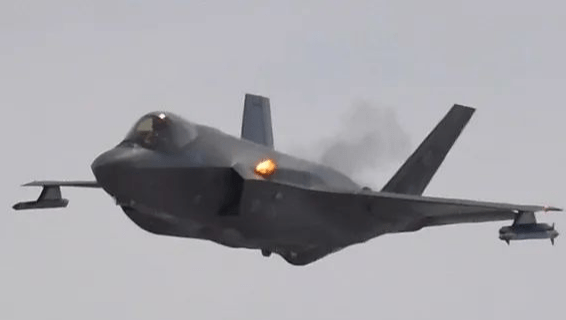
The world's best helmet sensor manufacturer
The DAS image is projected onto the visor of the helmet for viewing by the pilot. (Screenshot from Youtube video)
Continue to introduce the weapon station. The F-35A has an internal quad-barreled 25mm GAU-22/A cannon and two weapons bays, each capable of carrying one air-to-air weapon and one air-to-ground weapon, up to a 2,000-pound warhead or two Air-to-air weapons. In so-called "beast mode," when stealth is not required, the F-35 can use three weapon stations under each wing: inner stations for payloads of up to 5,000 pounds, mid-plate stations for payloads of up to 2,000 pounds, and outer Stations are only used for air-to-air missiles.
The last important avionics system is MATL (Multi-function Advanced Data Link), which is a secure data link that allows the F-35 to communicate with each other or with other platforms using the same technology, such as the B-2 bomber and AEGIS equipped Ships with a combat system. As Wilson said, MADL increases the ability of the F-35 formation to share sensors and data from each aircraft to create greater situational awareness, much like the F-22s in Syria. The F-35 also has a Link-16 data link to communicate with other legacy platforms not equipped with MADL, performing the "booster" function of previous-generation platforms.
Joint Helmet Mounting Reminder System
According to data provided by Eurofighter, the Typhoon's HMSS has lower latency, higher clarity, improved symbology and night vision than the most common fighter helmet, the American JHMCS (Joint Helmet Mounted Cueing System), equipped with all The F-16, F-18 and F-15 jets of the U.S. Armed Forces and entered service in the late 90s.
The rather "bumpy" HMSS (and JHMCS, DASH, Striker, etc.) provide the necessary flight and weapon aiming information via line-of-sight imagery, making the Typhoon fairly deadly in an air-to-air engagement.
It's worth noting that the American F-22 pilot who scuffled his German colleagues in a Typhoon during the recent Red Flag race in Alaska is currently not equipped with a helmet-mounted display.
Information (including the aircraft's airspeed, altitude, weapons status, aiming, etc.) is projected on the Typhoon's visor, and the HEA - Helmet Equipment Assembly - enables the pilot to look in any direction, with all required data always in his field of vision. JHMCS (Joint Helmet Cueing System) is a multi-role system that enhances the pilot's situational awareness and provides head control of the aircraft's targeting systems and sensors. The helmet can be used for air-to-air missions in combination with AIM-9X missiles as a high off-axis (HOBS) system, allowing the pilot to cue onboard weapons against enemy aircraft simply by pointing their head at the target to guide the weapon. In an air-to-ground role, the JHMCS can be used in conjunction with targeting sensors (radar, FLIR, etc.) and "smart weapons" to attack surface targets with accuracy and precision.
Scorpion helmet reminder system
Operation Guardian Blitz provided Warthog pilots with the opportunity to conduct basic surface attack (BSA), close air support (CAS) and night flight operations training while utilizing NVG (Night Vision Goggles), as well as at Avon Park Air Range (APAFR) fires the iconic GAU-8/A Avenger Gatling gun at a 106,000-acre bombing range in central Florida.

Helmet sensor manufacturer in China
This is the second time this year that an A-10 from Fort Wayne has deployed to Florida for the Guardina Blitz: the first was at the end of <>.
The video below shows the Black Snake at work during the exercise. In addition to the dual GoPro setup (which allows two-way video recording), the clip also shows the A-10's Gentex/Raytheon Scorpion helmet cueing system.
Scorpion, developed by GentexVisionix, is a monocle-based system that can be applied to various helmet shells, requiring only a small interface control unit and a magnetic sensor mounted in the cockpit. It provides full-color, dynamic flight and mission data projected safely and directly into the crew's line of sight through a large field of view, fully transparent, rugged light guide assembly. This feature allows the user to keep their head up and eyes out of the cockpit and greatly enhances real-time situational awareness (SA).
Scorpion (full color helmet cueing system with a 26° x 20° field of view) is fully integrated with the aircraft's avionics, requires no avionics bay integration, and is capable of providing GPS coordinates of designated points for targeting or handover to other platforms.
easy installation. The Scorpion system has one component that can be easily installed in the cockpit of an aircraft - the Interface Control Unit (ICU).
more specifically:
All system control via Ethernet data bus (alternative control panel can be used for system control)
One LRU mountable in side console DZUS rail bracket
Inertial light hybrid tracker requires no mapping
System interface via Ethernet or MIL-STD-1553B
Systems are available in data transfer cartridge sizes up to 128 GB
Scorpion is an open system that allows each pilot to create their own cockpit, choosing from a variety of Scorpion features, allowing personalization and prioritization of the data displayed:
Pilots don't have to constantly scan and interpret all the "heads down" data in aircraft instruments and displays. Pilots have all the necessary data available in a virtual Heads Up Display (HUD) with 360⁰ x 360⁰ conformal color symbology superimposed on the "real world".
Symbols are programmed by the integrator and downloaded by the aircraft mission system at startup
Integrators define when and where to place symbols or live video.
Both video and symbols can be scaled. Just define a symbol and expand or shrink dynamically.
Placement can be in any of the following four coordinate systems:
Earth(latitude, latitude, alternative)
Aircraft (azimuth, elevation, roll)
Cockpit (X, Y, Z relative to design eye)
Helmet (azimuth, elevation and roll relative to helmet hole sight)
The Scorpion Display Module (SDM) is small enough to place no noticeable additional weight burden on the pilot's head, and can be flipped and swiveled when not needed.
The helmet supports a full day/night transition mission, as shown in the short video, during which you can see the pilot take off at dusk without the NVG, then use the goggles to fly a partial sortie (Scorpion with AN/AVS-9 NVG and Panoramic Night Vision Goggles Compatible - PNVG). Interestingly, the helmet system continues to provide HUD-like symbology and video (such as on-demand sensor IR video) feeds during NVG attach/detach.
Internal 25mm cannon
The footage released by the US Air Force after a training event is particularly interesting because they show the internal guns at work: GAU-22 guns hidden behind closed doors to reduce the aircraft's RCS (radar cross section) and remain stealthy until the trigger is pulled .
The F-35's GAU-22/A is based on the proven GAU-12/A 25mm cannon used in the AV-8B Harrier, LAV-AD amphibious vehicle and AC-130U gunship, but has one less gun than its predecessor Tube. This means it is lighter and can be mounted on the F-35A's left shoulder above the air intake. The gun could fire at a rate of about 3,300 rounds per minute: Considering that the Model A could only hold 181 rounds, that equates to a continuous 4-second burst, or more realistically, multiple short rounds.
The F-35 GAU-22/A gun has been one of the most controversial topics in the past few years: not only has it been criticized that the Joint Strike Fighter's gun can only hold 181 25mm rounds, which is more than the A-10 Thunderbolt's GAU-8 The /A Avenger is less, holds about 1,174 30mm rounds, and is also of questionable accuracy due to the "long and rightward aiming bias" reported in the FY2017 report. Provided by the Office of the Director of Operational Testing and Evaluation (DOT&E). It's unclear whether the accuracy issue has been fully resolved.
Notably, the training sorties were flown with the aircraft carrying two external pylons (with an inert AIM-9X Sidewinder air-to-air missile).
While the F-35A will have an embedded GAU-22/A cannon, the B (STOVL - Short Takeoff Vertical Landing) and C (CV - Carrier Variant) variants will carry it in an external pod capable of holding 220 rounds Inside.
According to the 388th FW's website, "Loading and firing a cannon is one of the few capabilities that pilots in the 388th and 419th FW have yet to demonstrate. The F-35A's internal cannon allows the aircraft to remain stealthy against air opponents and to be more accurate It can shoot directly at ground targets, providing pilots with greater tactical flexibility.


